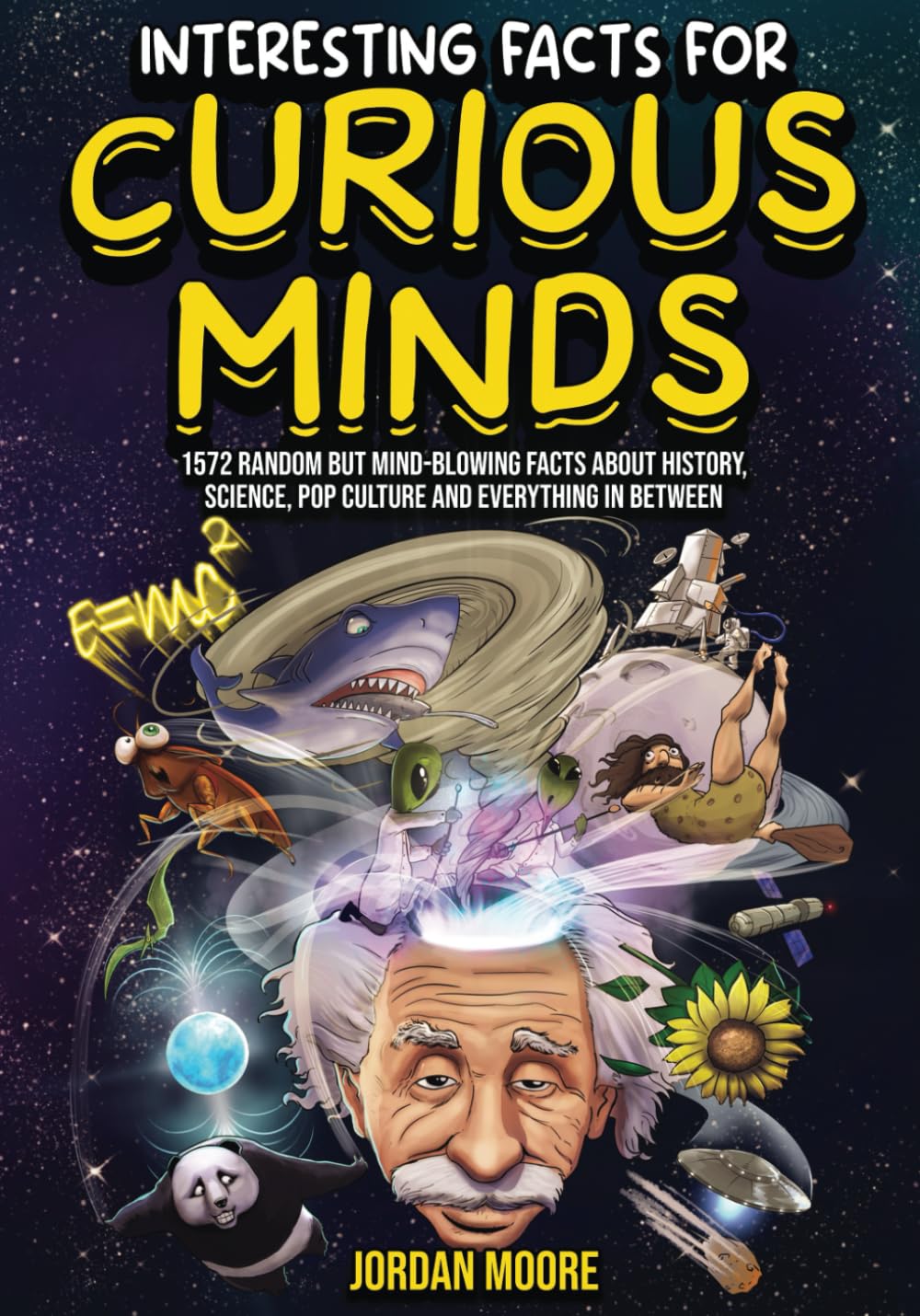
Interesting Facts For Curious Minds: 1572 Random But Mind-Blowing Facts About History, Science, Pop Culture And Everything In Between
The Earth Is One Big Rock
byThe Earth is one big rock, and its surface is constantly shaped and transformed by various geological processes that have occurred over millions of years. Geology, the science of studying the Earth’s rocks, minerals, and processes, provides valuable insight into how the planet functions. This field is not limited to solid matter; it also includes the study of liquids, such as water and magma, that contribute to the planet’s dynamic nature. Geologists work to understand the Earth’s internal structure, the formation of its features, and the ongoing changes that affect its surface. Through this scientific study, we gain a better understanding of the forces that have shaped our world and continue to do so today.
One of the most significant processes in the Earth’s geological history is the shifting of tectonic plates, which make up the planet’s lithosphere. The theory of plate tectonics, first widely accepted in the mid-20th century, explains how the Earth’s outer shell is divided into plates that float on the semi-fluid mantle beneath them. These plates move slowly, causing earthquakes, volcanic activity, and the formation of mountain ranges. Over millions of years, plate movements have led to the creation of continents and oceans, with continents once joined together in supercontinents like Pangaea, which split apart to form the world’s current landmasses. In the future, scientists predict that the Earth’s plates will shift once again, forming new supercontinents that will continue to reshape the planet.
Rocks play a crucial role in understanding the Earth’s history, with three main types: igneous, sedimentary, and metamorphic. Igneous rocks are formed from the cooling and solidifying of magma beneath the Earth’s surface. These rocks make up the majority of the Earth’s crust and can be found in places like volcanic regions. Sedimentary rocks, on the other hand, are created from the accumulation of sediments, such as sand, minerals, and organic matter, over time. These rocks often contain fossils, which provide a record of ancient life. Metamorphic rocks are those that have been altered by heat and pressure, often transforming into more complex structures. Together, these rock types tell the story of the Earth’s evolution and offer clues about past climates, ecosystems, and geological events.
Earthquakes are another natural event that demonstrates the dynamic nature of our planet. They occur when the Earth’s tectonic plates shift, releasing built-up energy in the form of seismic waves. The magnitude of an earthquake is often measured using the moment magnitude scale, which has evolved from the earlier Richter scale. Earthquakes can cause significant damage, but they also reveal valuable information about the structure of the Earth’s interior. In regions like Alaska, which sits on the Pacific Ring of Fire, earthquakes occur frequently, highlighting the active geological processes at play. Similarly, the 1960 Great Chilean Earthquake, which remains the most powerful earthquake ever recorded, demonstrated the immense energy that can be released during such events.
Volcanic activity, often linked to plate tectonics, is another vital geological process. The Hawaiian Islands, for example, are the result of a hotspot in the Earth’s mantle, where magma rises to the surface, creating volcanic islands over time. This type of volcanic activity, known as a hotspot, continues to shape the islands as new eruptions occur. The study of volcanism and its associated features, such as lava flows and craters, helps scientists understand the processes that shape the Earth’s surface. In addition to providing insights into the Earth’s geological activity, volcanic eruptions can have significant impacts on the environment and climate, as seen in the cooling effects caused by the 1991 eruption of Mount Pinatubo.
Geology also plays an essential role in understanding natural resources, as minerals and energy sources are deeply connected to the Earth’s structure. The study of rock formations allows scientists to locate valuable materials such as oil, coal, and precious metals. These resources are integral to modern society, providing energy, building materials, and economic opportunities. Understanding how these resources are formed and distributed on the planet is crucial for sustainable development and responsible resource management. Additionally, geology helps identify natural hazards such as landslides, floods, and tsunamis, allowing for better disaster preparedness and mitigation strategies.
Finally, the study of geology continues to evolve with advancements in technology. Tools like seismic imaging, GPS monitoring, and satellite data allow scientists to monitor the Earth’s changes in real-time, improving our ability to predict and understand natural disasters. These technological advancements have also led to better mapping of the Earth’s surface and subsurface, enabling the exploration of previously inaccessible areas. As our understanding of the Earth’s geology deepens, we can make more informed decisions about environmental protection, resource management, and the long-term sustainability of our planet.
In conclusion, the Earth is one big rock, continuously shaped by the forces of nature that drive its dynamic processes. From the shifting of tectonic plates to the formation of mountains and volcanoes, the planet is constantly evolving. The study of geology provides essential insights into these processes, helping us understand the Earth’s past, present, and future. As technology advances, our ability to monitor and predict geological events improves, offering new opportunities for exploration and environmental stewardship. The Earth’s geological processes are at the heart of our planet’s ongoing transformation, revealing the complexity and beauty of the world beneath our feet.

